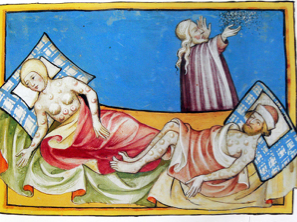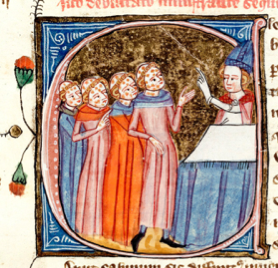Sign up for FlowVella
Sign up with FacebookAlready have an account? Sign in now
By registering you are agreeing to our
Terms of Service
Loading Flow




“It did not take the form it had assumed in the east, where if anyone bled from the nose it was an obvious portent of certain death. On the contrary, its earliest symptom, in men and women alike, was the appearance of certain swellings in the groin or the armpit, some of which were egg-shaped whilst others were roughly the shape of the common apple. Sometimes the swellings were large, sometimes not so large…From the two areas mentioned… this would begin to spread, and within a short time it would appear at random all over the body. Later on, the symptoms of the disease changed, and many people began to find dark blotches and bruises on their arms thighs, and other parts of the body…”
- Giovanni Boccaccio, Introduction to the Decameron (1349-1351). Aberth, Source 6
SYMPTOMS OF THE PESTILENCE

Just as ‘diagnosis’ of historical diseases is extremely difficult by reading texts that describe symptoms, diagnosis through images is a tricky business. Are the man and woman in the image on the left suffering from the Bubonic Plague, or some other disease such as smallpox? Are the men on the right victims of plague, or could it be leprosy? Click on this tiny thumbnail for a photo of the characteristic buboes associated with plague (heads up! image is graphic)

Image: Toggenburg Bible (1411)
Image: London, British Library MS of James le Palmer, Omne Bonum, c. 1360-c. 1375.